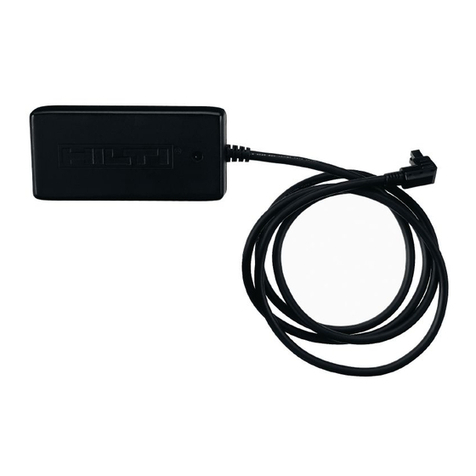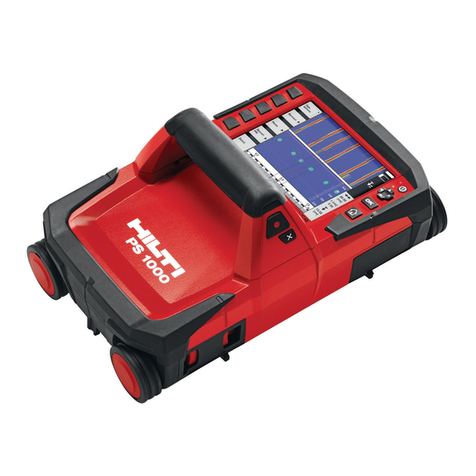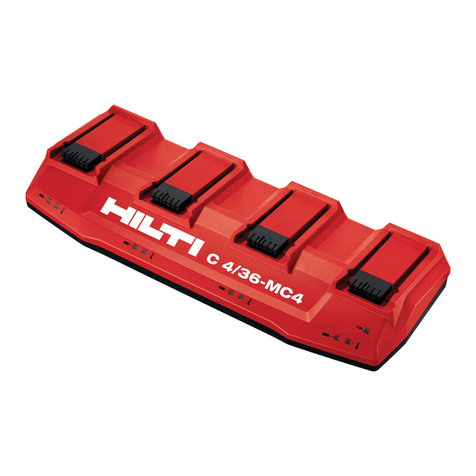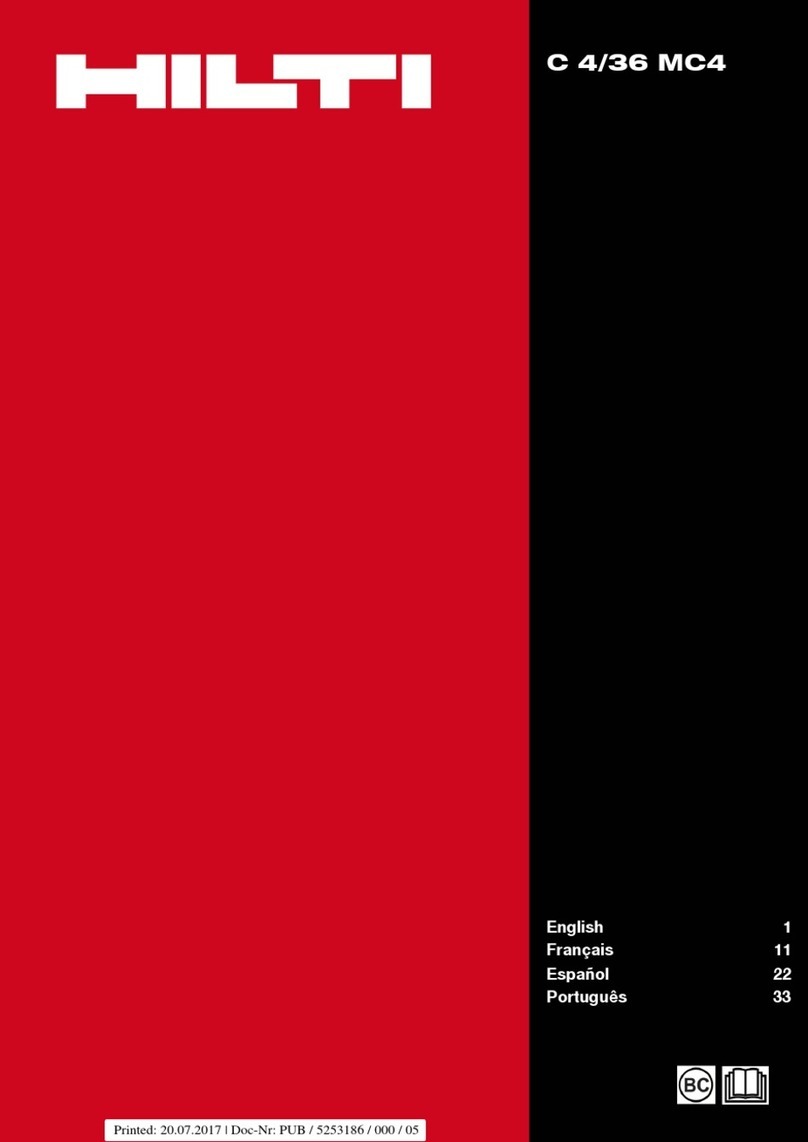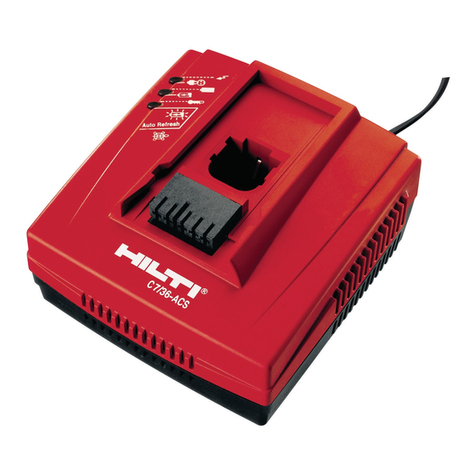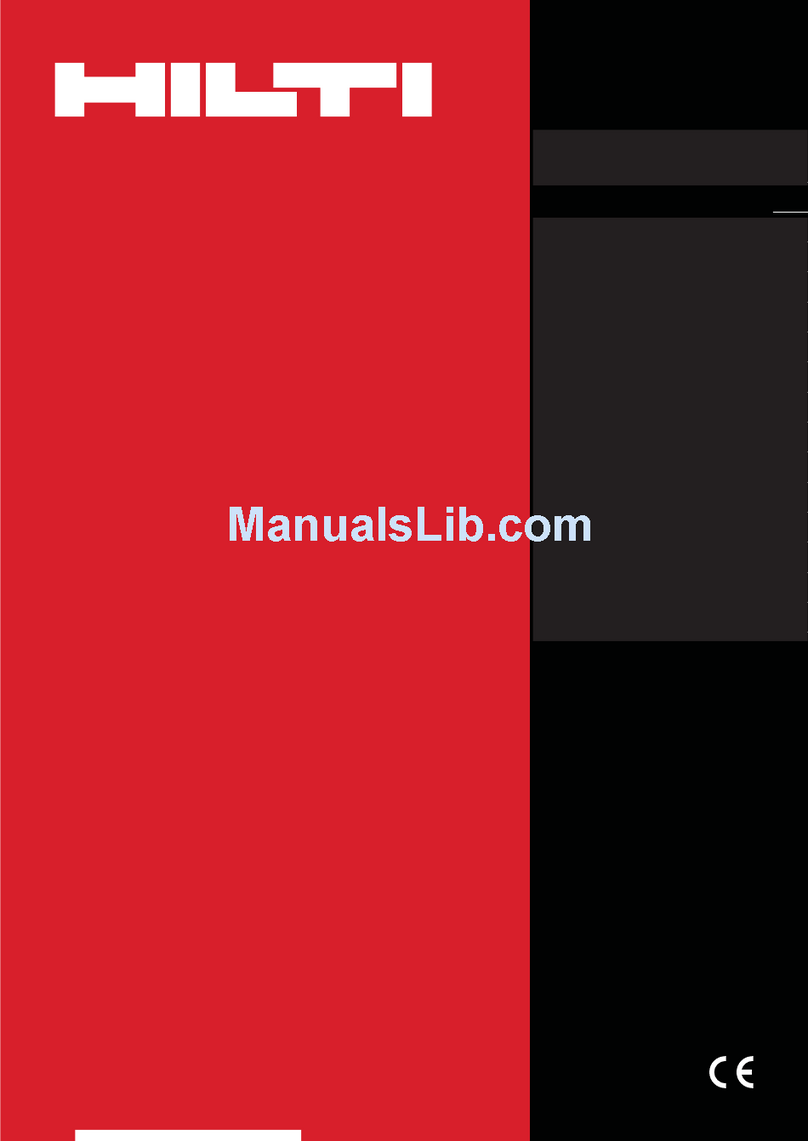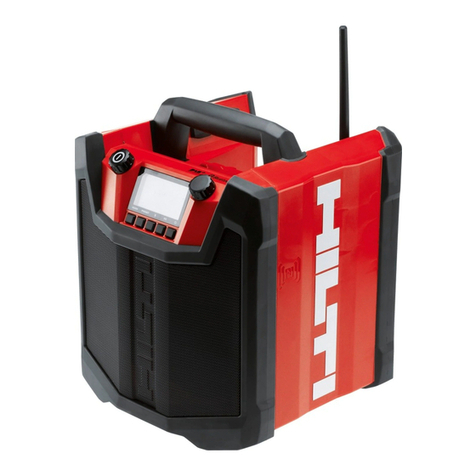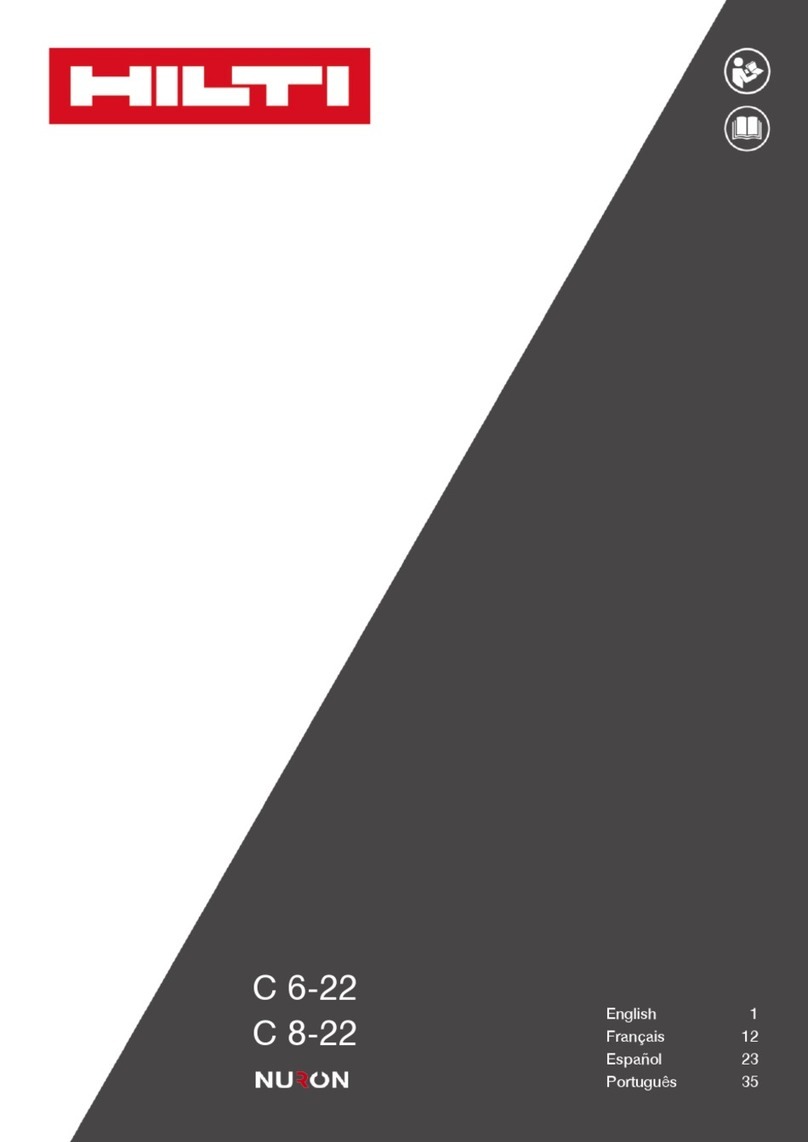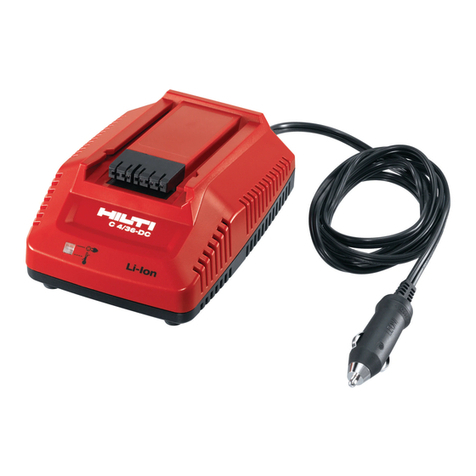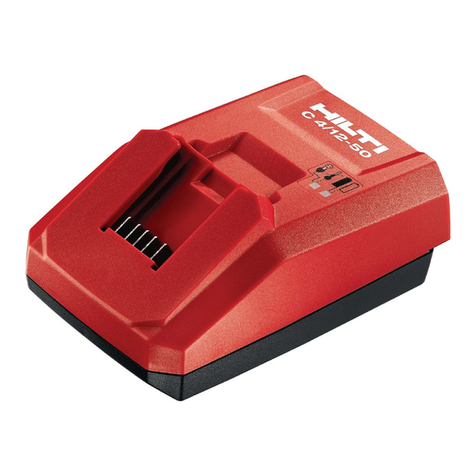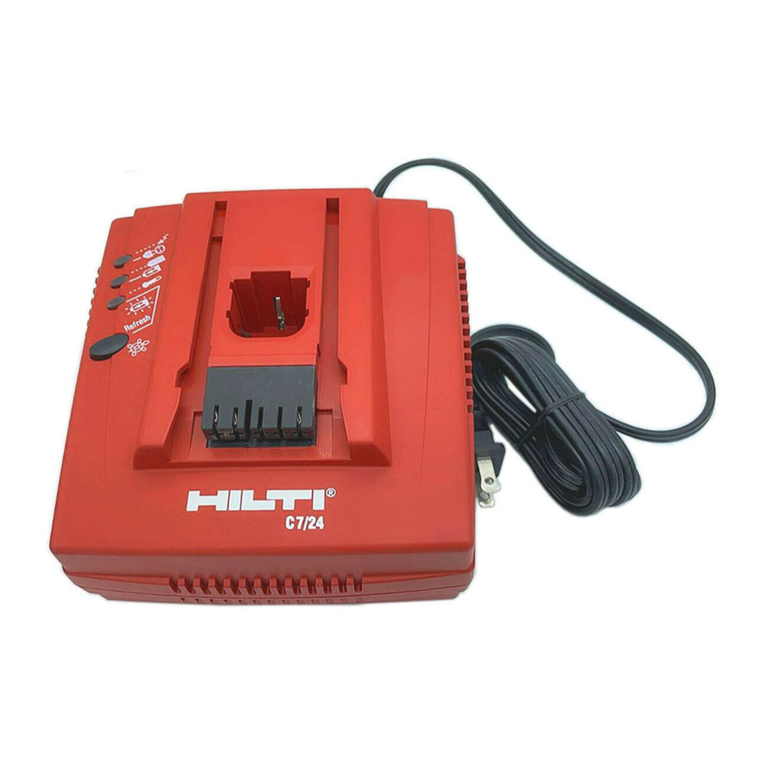en
18
e) Recharge only with the charger specified by the manufacturer.A
chargerthatissuitableforonetypeofbatterypackmaycreateariskof
fire when used with another battery pack.
f) When not in use, keep the battery and the charger away from paper
clips, coins, keys, nails, screws or other small metal objects that
could cause a short circuit at the battery terminals or the charging
contacts. A short circuit at the battery terminals or charging contacts
could result in personal injury (burns) or fire.
g) Under abusive conditions, liquid may be ejected from the battery,
Avoid contact with the liquid. If contact accidentally occurs, flush
with water. If the liquid comes into contact with the eyes also consult
a doctor. Liquids ejected from the battery may cause irritation or burns.
h) Make sure that the batteries suffer no mechanical damage.
i) Do not charge or continue to use damaged batteries (e.g. batteries
with cracks, broken parts, bent or pushed-in and/or pulled-out
contacts).
2.1.5 Service
Have the appliance serviced by a qualified repair person using only
identical replacement parts. This will ensure that the safety of the appliance
is maintained.
3 Description
3.1 Use of the product as directed
The appliance is designed to charge Hilti Li-ion batteries with a rated voltage
of7.2to36volts.
The C 4/36-90 and C 4⁄36350 chargers are designed to be connected to
a power outlet providing an AC voltage of 100 to 240 volts (depending on
country-specific version).
The C 4/36-DC charger is designed to be connected to a motor vehicle’s
cigarette lighter socket providing a DC voltage of 12 or 24 volts.
The following batteries are approved for use with these chargers: B 12/2.6
LiIon with the CA-B12 adapter, B 14/1.6 LiIon, B 14/3.3 LiIon, B 22/1.6
LiIon, B 22/2.6 (01) LiIon, B 22/2.6 (02) LiIon, B 22/3.3 LiIon, B 22/5.2
(01) LiIon, B 36/3.0 LiIon, B 36/3.9 LiIon, B 36/6.0 LiIon.
Observe the national health and safety requirements.
Observe the safety precautions and operating instructions for the accessor-
ies used.
To avoid risks, use only the specified batteries.
Do not use the battery as a power source for other unspecified appliances.
Printed: 06.07.2015 | Doc-Nr: PUB / 5129952 / 000 / 07
